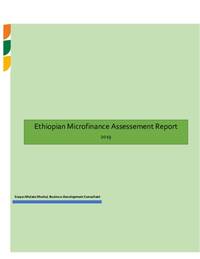Ethiopian Micro-Finance Landscape Report

Authors:
Finance is one of the key elements addressing development issues in Ethiopia. It plays a leading role in guiding development interventions in the country. Development strategies or programs (poverty reduction strategy, rural development strategy) require finance and financial systems to support implementation. To develop an inclusive financial system in the region, there is a need to have well-functioning financial system and institutions in place. In order to increase outreach, expansion of branches, efficiency, inclusiveness, appropriateness, innovations and sustainability, there is a need for interventions/support by banks, microfinance and RUSSACOs/SACCOS providers.
This assessment focuses on the landscape and performance of microfinances (MFIs) in Ethiopia. Microfinance refers to a broad range of financial services made available to low-income clients, particularly women. The services include loans, saving, insurance, and remittance. The clients of microfinance institutions (MFI), largely belonging to low income households, have limited access to formal financial services. MFIs serve a market segment that is considered ‘high-risk’ by formal banks. Small households have fluctuating incomes, few assets and require very small loans, a high degree of close follow-up and business appraisal. Financial transactions with this client base calls for careful appraisal and close post-disbursement follow-up. MFIs offer much needed financial service mainly to the informal sector which would otherwise depend on exploitative moneylenders.
